During the last two days of the Eastern Holidays in 2016, Erika and I visited the Forêt de Saou in the Drome. The forest is well known for its Carabus diversity and for holding an amazing variety of different colour morphs of Carabus monilis. Under here an image from Carabus hispanus, one of the 'star beetles' from Saou!

Rainy and cold weather
Unfortunately, when we arrived the temperatures had dropped down to 5 °C, and on our first morning walk in the forest was raining cats and dogs. So no chance of finding any Carabus monilis: it is a spring species, which hibernates deep in the ground and who becomes active during the first warm spring day, usually by the end of April. But no worries, there were plenty of other species I could look for, such as Carabus hispanus, and Carabus violaceus mixtus neomixtus. We had only one entire day left to spend in Saou, so waiting for better conditions was no option.
Forests in the mist
Despite the harsh weather conditions on our arrival at the Forest of Saou, we very charmed by the superb landscape and the nice old rural houses. The region of the Drome, located on a pre-alpine plateau of about 300 metres above sealevel, still holds many old semi-natural grasslands, as well as old hedges, tree rows and old solitary oak trees of several hundreds of years old. When entering the Forest of Saou, one sees an impressive forested mountain rising high above the plateau. The mountain has steep outer walls and has the shape of a bath tub, with a small river running through the central valley on the inner side of the mountain. The forest along the valley is very humid and has hence a lush vegetation with trees covered in mosses, lichens and ferns. All the rocky escarpments along the winding rivulet are also covered by thick moss layers.
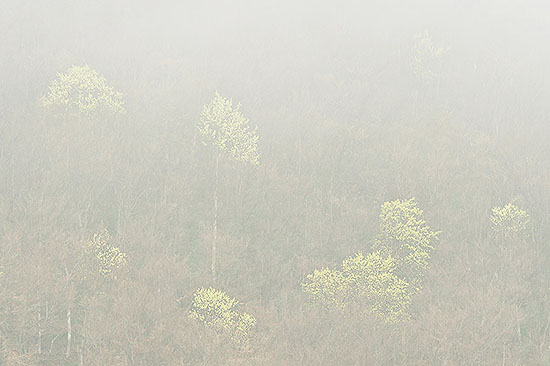
When we entered the inner valley of the forest, a thick fog soon came up and later on it started to rain heavily. Not exactly the most attractive weather for a nice forest walk or for looking for beetles. On the other hand the colours of the wet and lush vegetation were particularly intense, which allowed me to take some nice landscape pictures. When in the evening the fog cleared up, some attractive mysterious sceneries popped up out of the thick fog, before being swallowed up quickly again by the clouds.
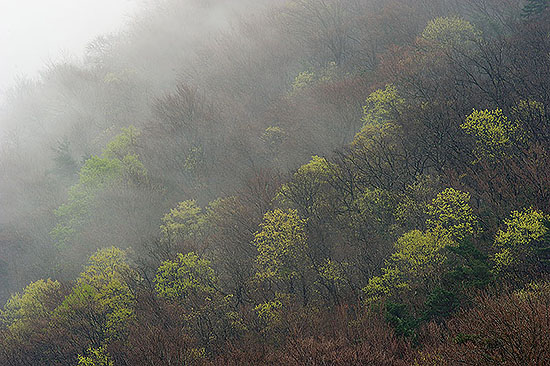

Old growth
Under here some images, from the splendid old growth forest along the river, la Vèbre.

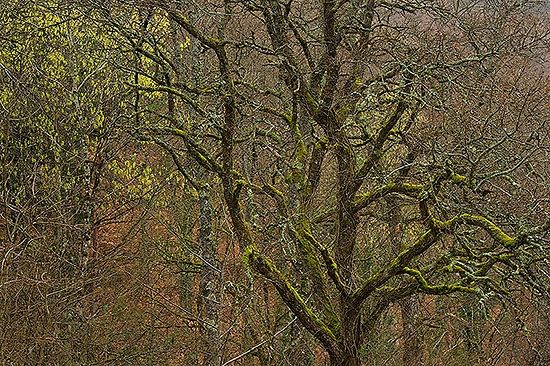

Carabus violaceus mixtus neomixtus
After having explored a little bit the area, I decided to start looking under rocks, logs and stones for Carabus species. Most of the specimens had already left their winter hides under mosses and in logs. Very likely they were inactive due to the cold weather, and were hiding somewhere under the thick leaf layer of the beech and oak forests. So chances of finding them was much lower than during the winter. After having searched for almost two hours in the pouring rain, I finally came across a few Carabus violaceus specimens and one Carabus intricatus. Under here an image from Carabus violaceus mixtus neomixtus, an intermediate race which is found in the Forêt de Saou ('natio saouensis' according to Forel & Leplat). The next image shows the habitat where I found this individual.
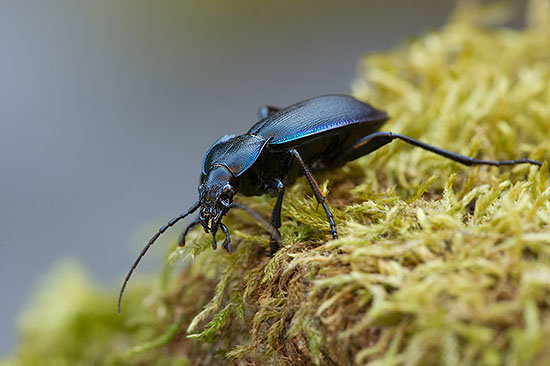
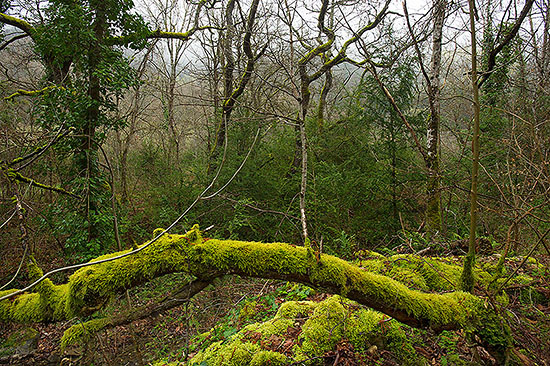
'Carabus violaceus' and 'Carabus purpurascens' are considered by some authors (Rautenstrauch) as a separate species, or 'Megondontus purpurascens' and 'Megodontus violaceus'. In Turin et al., 'purpurascens' is considered as a subspecies of Megodontus violaceus or Carabus violaceus. Carabus purpurasecens occurs in the Western part of Europe and has a more pronounced elytral structure with fine stripes. Carabus violaceus has an almost flat elytral structure. The individuals I found belong to the intermediate form, Carabus violaceus mixtus neomixtus, which can be found in the Drome.
Under here some extra images from the Carabus violaceus mixtus neomixtus.
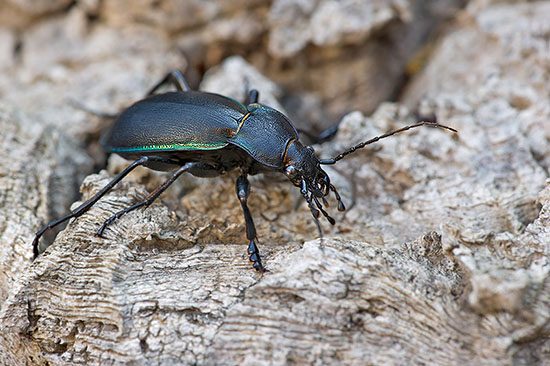
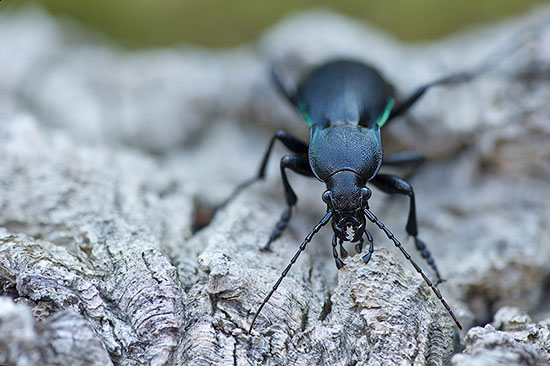
After having searched under rocks, stones and logs for beetles during four hours in the rain, I was completely soaked and decided to head back to our guesthouse to warm a little bit up.
Carabus hispanus
Luckily, the weather had cleared up slightly during the afternoon and the pouring rain had turned meanwhile into a moderate drizzle. I decided to explore a forest patch a little higher up and in an area with plenty of large rocks. After having looked under hundreds of stones and having found some extra Carabus violaceus specimens, I finally found a splendid Carabus hispanus female. What a beast!
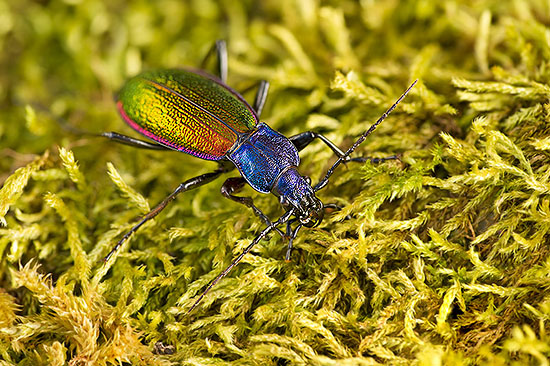
Carabus hispanus is one of the most strikingly coloured ground beetles in Western Europe, which has a localized distribution in the South of France. It has a typical shiny appearance with changing colours, depending on the angle you look at it. From above this beetle seems reddish-orange and from aside it looks rather golden-coloured to greenish. It is one of the bigger representatives of the genus Carabus in France. The specimens can measure up to 36 mm.
This individual belongs to the subspecies dromensis and is slightly smaller compared to the individuals found more in the Western part of its range (belonging to the subspecies latissimus found in the Montagne Noire).
Under here some extra pictures from Carabus hispanus.
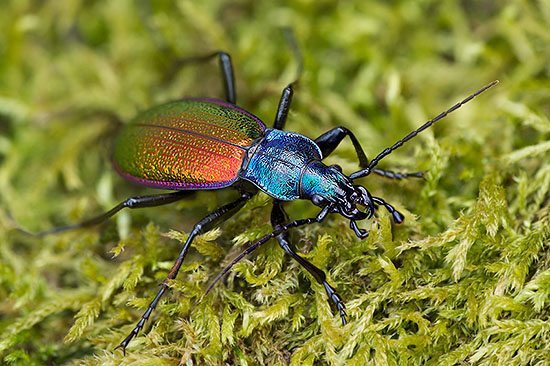

Under here some low shutter speed images made from a running Carabus hispanus.
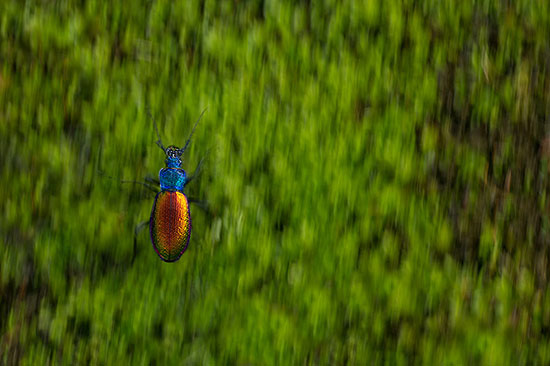

Bloody-nosed Beetles
During the first morning I also inspected the meadows in vain in search of an early Carabus monilis or auratus. But I was happy to find in the same area plenty of Bloody-nosed beetles, Timarcha tenebricosa in the forest edge and in the lush meadows. Under here some images from this early spring beetle.
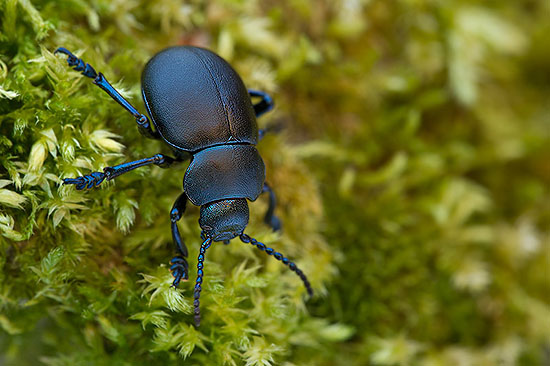
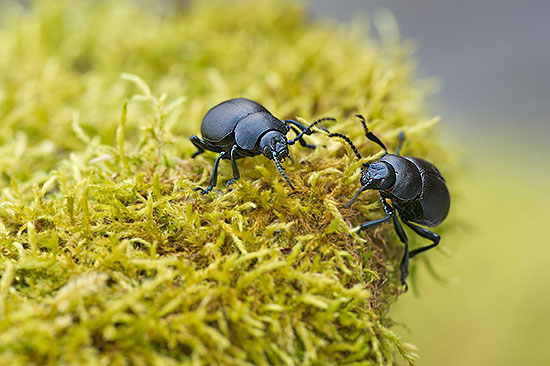
On the last morning I took some images from the beetles in the wet meadow, here’s one of my favourite images from them.
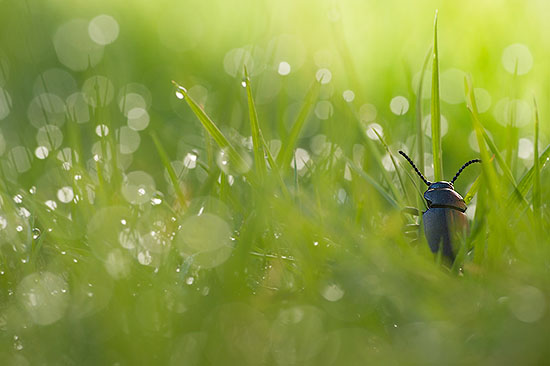
For those interested in larger scale images, please have a look at my stock photography and images from the Drome.
